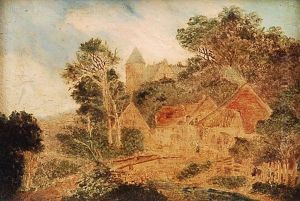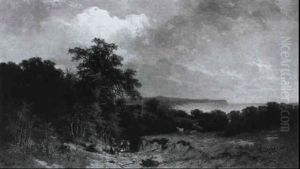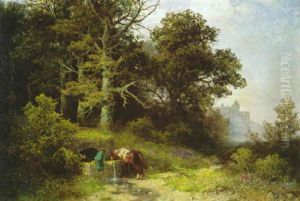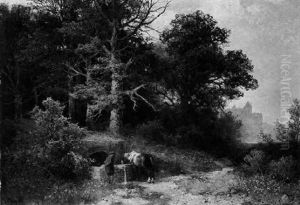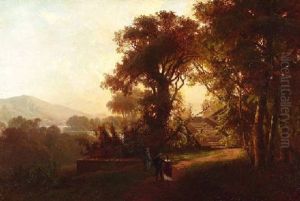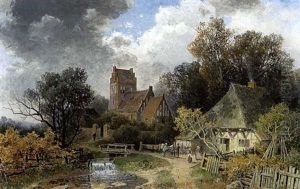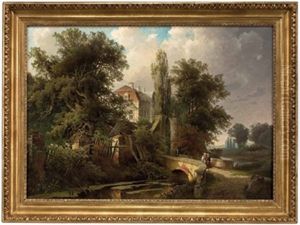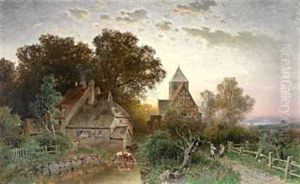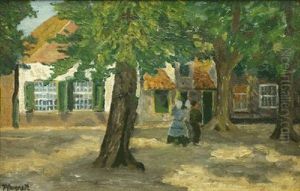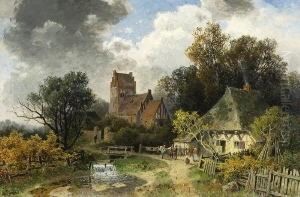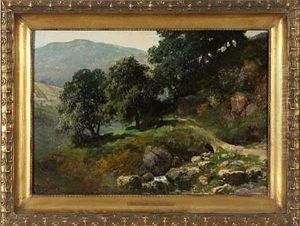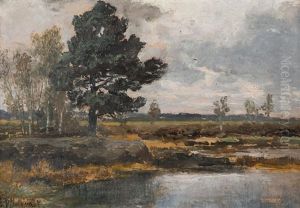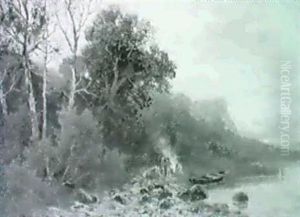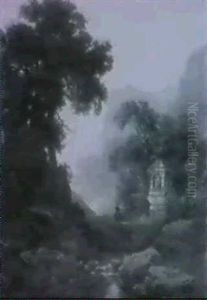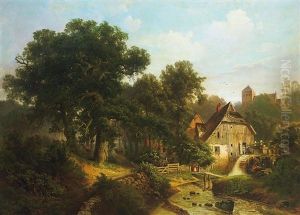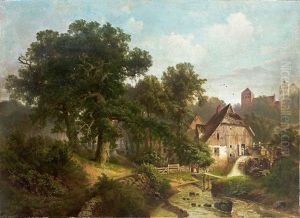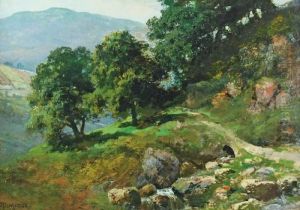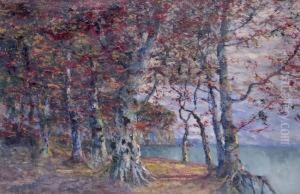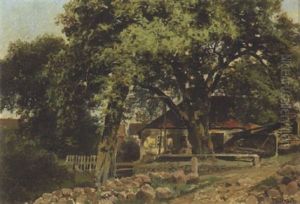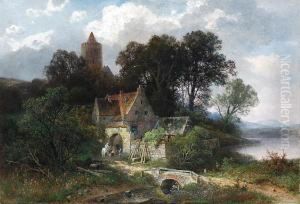Gustav Pflugradt Paintings
Gustav Pflugradt was a German landscape painter born on March 26, 1828, in Neustrelitz, Mecklenburg-Vorpommern. He was part of the 19th-century European art movement that focused on the natural beauty of landscapes, and he is known for his realistic depictions of the German countryside. Pflugradt's work often captured the idyllic and pastoral scenes of rural areas, reflecting the Romantic period's emphasis on the emotional and picturesque qualities of nature.
Pflugradt received his artistic training at the Academy of Arts in Berlin, where he studied under well-regarded teachers such as Carl Joseph Begas and Wilhelm Krause. This education provided him with a strong foundation in the techniques of painting and an understanding of the Romantic ideals that were popular at the time. He was influenced by the works of other landscape painters of his era, such as Caspar David Friedrich, who emphasized the emotional impact of natural settings.
Throughout his career, Pflugradt exhibited his works at various art shows and was recognized for his contributions to landscape painting. His paintings often featured the lush forests, tranquil lakes, and rolling hills of the German landscape, executed with careful attention to light and atmosphere. Pflugradt's ability to evoke mood through his depiction of light and shadow made his paintings resonate with viewers, and his work was well received.
Despite the popularity of his landscapes, Gustav Pflugradt did not achieve the same level of fame as some of his contemporaries. Nevertheless, his paintings remain appreciated for their technical skill and their embodiment of 19th-century Romantic principles. Today, his work can be found in private collections and museums throughout Germany and is studied by those interested in the history of landscape painting.
Gustav Pflugradt continued to paint and contribute to the arts until his death on April 3, 1904, in Berlin. His legacy is that of a skilled landscape painter who captured the serene beauty of the German countryside, contributing to the rich tapestry of 19th-century European art.
